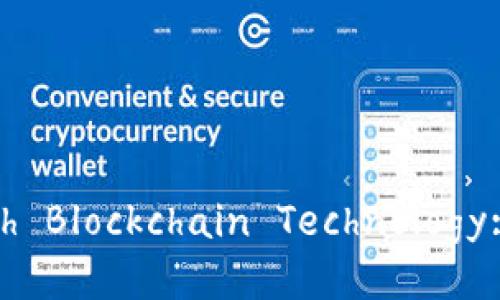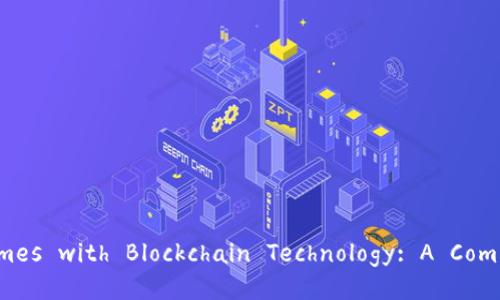## Empowering Games with Blockchain Technology: A Comprehens
- By BIT派交易所官网
- 2025-05-05 05:19:54
In recent years, blockchain technology has emerged as a transformative force across various sectors, and the gaming industry is no exception. By providing new ways of interaction, ownership, and monetization, blockchain is reshaping how players experience games. This evolution not only enhances gameplay but also introduces new economic models and innovative features that were previously unimaginable.
Traditional gaming platforms have moved towards centralized control, where game developers and publishers dictate the rules and ownership of assets. In contrast, blockchain technology, with its decentralized nature, allows players to genuinely own their in-game assets, engage in transparent transactions, and participate in new economic ecosystems. This article will delve into how blockchain empowers the gaming industry, the benefits it brings to players and developers, and the potential challenges that lie ahead.
### How Does Blockchain Work in Gaming?The Fundamentals of Blockchain Technology
To understand the impact of blockchain on gaming, one must first grasp how blockchain technology works. At its core, a blockchain is a distributed ledger that records transactions across multiple computers. This ensures that the data cannot be altered retroactively without the consensus of the network, providing a high level of security and transparency.
In the gaming context, blockchain allows for the creation of unique digital assets that players can own, trade, and sell. These assets can include characters, items, skins, and even in-game currencies. By leveraging smart contracts – self-executing contracts with the terms directly written into code – game developers can automate transactions and ensure fair gameplay mechanics without the need for intermediaries.
The Role of NFTs in Gaming

Non-fungible tokens (NFTs) represent a significant innovation in the gaming space. Unlike traditional currencies or items that can be exchanged on a one-to-one basis, NFTs are unique and cannot be replicated. This uniqueness adds value to digital assets and allows players to trade them on various marketplaces.
Many games are now incorporating NFTs to create a player-driven economy. For example, players can create, buy, and sell in-game items as NFTs, giving them real-world value. Furthermore, NFTs can facilitate true ownership, as players can transfer their assets across different games, fostering interoperability in gaming ecosystems. This shifts the power from developers to players, making gaming more democratic and engaging.
### Benefits of Blockchain in GamingTrue Ownership of In-Game Assets
One of the most significant benefits of integrating blockchain technology into gaming is the concept of true ownership. In traditional games, players might invest time and money in acquiring virtual items, but they do not truly own them. Game developers have the authority to delete or modify these assets at any time.
However, with blockchain, players can possess their assets as NFTs. This means they can trade, sell, or use them across different platforms without restrictions. True ownership empowers players and can lead to a more invested gaming community as players feel more accountable for their possessions.
Enhanced Trust and Transparency

Blockchain technology enhances trust and transparency within the gaming community. Traditional games often deal with issues such as cheating, scams, and lack of transparency in transactions. However, since blockchain records every transaction on a public ledger, players can verify ownership and the authenticity of assets.
This transparency reduces fraud and fosters a healthier gaming environment. Players can engage in transactions knowing that the protocols are secure and that no manipulation is taking place behind the scenes. Game developers can also leverage blockchain to maintain fairness, as smart contracts execute pre-defined rules automatically, eliminating any biases in gameplay.
New Economic Models
Blockchain opens up new and exciting economic models for both game developers and players. By allowing microtransactions, developers can generate revenue from in-game purchases without requiring large initial investments. This can lead to “play-to-earn” models where players can earn real money through gameplay.
Moreover, developers can monetize their games through secondary markets where players can resell assets. This not only creates an additional revenue stream for developers but also incentivizes players to actively participate in the game’s economy. The ability to earn while playing adds a new layer of engagement and encourages long-term retention of players.
### Challenges of Integrating Blockchain in GamingScalability Issues
Despite the numerous benefits of blockchain technology, several challenges affect its integration into gaming. One of the most significant challenges is scalability. Blockchain networks often struggle to handle large volumes of transactions, which is crucial for online gaming environments with thousands of players.
As the user base grows, network congestion can lead to slower transaction times and increased fees. Developers must work with blockchain platforms that can accommodate high volumes of transactions without compromising speed and efficiency. Solutions such as layer-2 scaling or new blockchain architectures are being explored to address these concerns.
User Experience and Accessibility
Another challenge is improving user experience and accessibility. The concept of blockchain can be complex and intimidating for the average gamer. Wallets, private keys, and gas fees are just a few of the hurdles that can deter traditional players from embracing blockchain-based games.
Developers need to create intuitive interfaces and seamless integration to ensure users can easily access and manage their digital assets. Education is also essential; developers should provide resources to help gamers understand the benefits of blockchain and how to navigate this evolving landscape.
Regulatory and Legal Concerns
As the gaming industry moves into the realm of blockchain, regulatory and legal issues will inevitably arise. Governments around the world are still grappling with how to manage cryptocurrencies and NFTs. Issues such as intellectual property rights, taxation, and consumer protection are significant concerns that need to be addressed.
Developers must stay informed about the legal landscape and ensure compliance with local regulations. This can complicate the launch and operation of blockchain-based games. Clear guidelines from regulatory bodies could foster a more stable environment for developers and players alike.
### Potential Related Questions #### 1. How does blockchain technology change the way we perceive ownership in video games?Changing Perspectives on Ownership
Traditionally, players have viewed ownership in video games through the lens of centralized control. When a game developer creates a game, they retain complete control over the game environment, including all assets. Players invest time and potentially money into these games, but they lack genuine ownership, as demonstrated by the ability of developers to erase accounts or revoke access to in-game items.
Blockchain technology radically transforms this perspective by allowing true ownership. When players acquire assets as NFTs on a blockchain, they possess a unique record of ownership stored on a decentralized ledger. This record cannot be altered or revoked by any third party, including game developers. As a result, players can buy, sell, or trade these assets as they see fit, much like owning a piece of art or a collectible card.
The impact on player engagement is profound. Gamers no longer see themselves as mere users of a product but as stakeholders in a decentralized economy. This sense of ownership can lead to greater investment in the game and its community. It also encourages players to participate actively in the game’s ecosystem, fostering a sense of belonging and agency.
#### 2. What economic impact do play-to-earn models have on the gaming industry?The Economic Revolution of Play-to-Earn
The emergence of play-to-earn (P2E) models has revolutionized the gaming industry’s economic landscape. In traditional gaming frameworks, players primarily consume content without direct financial reward. However, P2E models incentivize gameplay by allowing players to earn real monetary value through their in-game activities.
By creating avenues for players to generate income, P2E models attract a larger audience, especially in regions where job opportunities may be limited. Players can earn rewards by completing tasks, winning competitions, or trading NFTs. This can lead to significant economic benefits for individuals, enabling them to supplement their income or even forge full-time careers around gaming.
Additionally, P2E models encourage increased retention and engagement, as players are more likely to remain active if they can earn real-world rewards. This has implications for developers, who can cultivate a more dedicated player base, potentially leading to higher revenue through continued engagement in game content and microtransactions.
However, the rise of P2E models is not without scrutiny. Critics argue that these models can lead to exploitative environments where players are primarily motivated by financial gain rather than enjoyment. Additionally, the sustainability of these models must be addressed, as relying heavily on player earnings can lead to market instability.
#### 3. What are the differences between blockchain gaming and traditional gaming?Understanding the Dichotomy
While both blockchain gaming and traditional gaming offer entertainment experiences, they differ fundamentally in terms of ownership, monetization, and community interaction. In traditional gaming, assets are owned by the developers, and players have limited control. Developers dictate the game’s rules and player experiences, often monetizing through initial purchases or microtransactions without providing players with true ownership.
In contrast, blockchain gaming empowers players by providing them with ownership of in-game assets through NFTs. Players can trade, sell, or utilize these assets across different games and platforms without restrictions, fostering a sense of accountability and personal investment.
Monetization strategies also differ significantly. Traditional gaming primarily relies on upfront purchases or in-game purchases, while blockchain gaming allows for innovative revenue streams. Developers can benefit from secondary markets, royalties on NFT sales, and decentralized economies where players earn real income through gameplay.
Furthermore, community interaction is enhanced in blockchain gaming, as players often have a voice in game development through decentralized governance models. Players can participate in decision-making processes and influence game updates, fostering a collaborative spirit that is often lacking in traditional gaming environments.
Conclusion
Blockchain technology is undeniably reshaping the gaming industry, bringing new paradigms of ownership, transparency, and economic opportunities. As we delve deeper into this exciting evolution, we must remain vigilant about the challenges that accompany these innovations. By addressing scalability, user experience, and regulatory hurdles, the gaming community can embrace the full potential of blockchain technology and create a more equitable and engaging ecosystem for players worldwide.
As blockchain continues to mature, it holds the promise of a future where gaming is not just about entertainment but also about empowerment, genuine ownership, and vibrant player-driven economies. The journey has just begun, and the possibilities are limitless.



